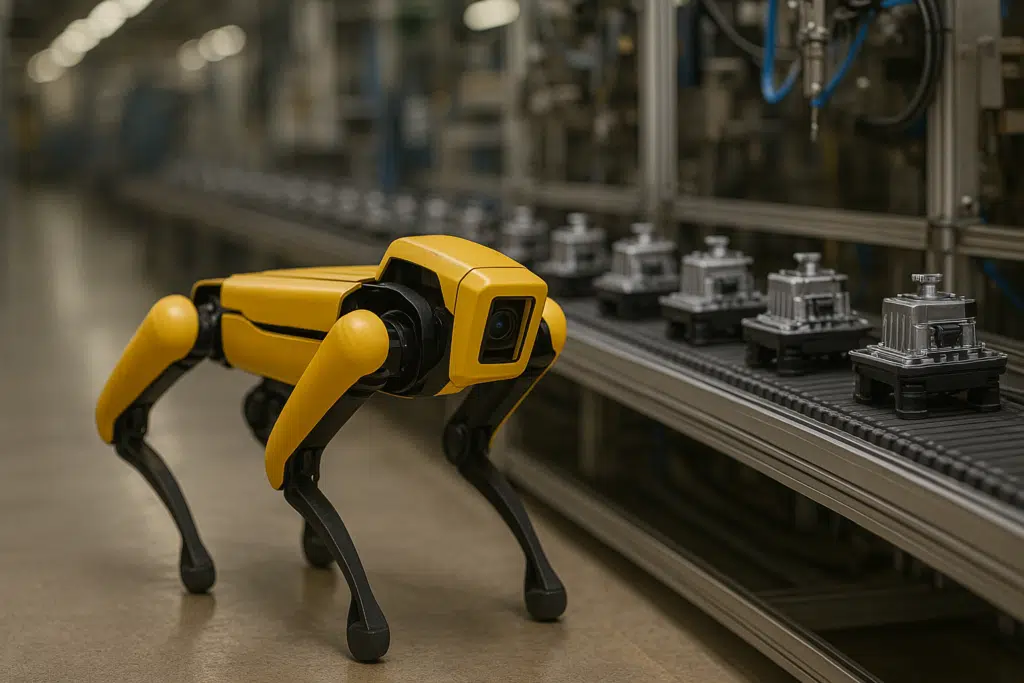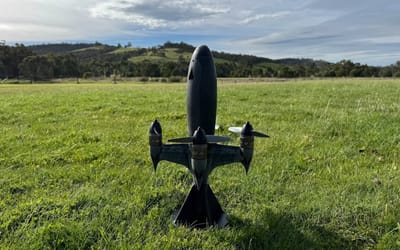World's first robot dog with animal reflexes manages to walk through woods without any training
Published on Jul 19, 2025 at 2:02 AM (UTC+4)
by Callum Tokody
Last updated on Jul 15, 2025 at 4:26 PM (UTC+4)
Edited by
Kate Bain
A new robot dog built with AI robotics and adaptive tech can now fully operate by itself without the need for human interaction.
The machine was developed in the UK and designed to move more like an animal, adapting its gait as needed in real time.
Engineers taught it everything it knows using computer simulations, with no field tests required before deployment.
Now that it has shown it can respond instinctively to changing ground conditions, the wider potential for robots like this is beginning to take shape.
VISIT SBX CARS – View live supercar auctions powered by Supercar Blondie
Robot dog trains entirely in simulation
The robot was developed by researchers at the University of Leeds and UCL.
It learns how to walk by running through hundreds of virtual environments, encountering simulated surfaces like forest floors, loose rocks, and wooden paths.
Once built, the robot was able to apply what it had learned immediately, without any tuning or reprogramming.
The use of adaptive tech allows the robot to adjust its movement as it goes.
It does not need to be told when to switch from a trot to a bound or when to shift its weight.

Those decisions are handled by the AI robotics system, which was trained to choose the most stable and energy-efficient movements depending on the terrain beneath its feet.
During testing, the robot walked across a variety of surfaces and remained upright even when it was pushed mid-stride with a broom to simulate a trip or obstacle.
Its stability came from the movement strategy it developed in training, not from reactive sensors or backup commands.
Joseph Humphreys, a postgraduate researcher in mechanical engineering at Leeds, said the goal was to make robotic movement more flexible and automatic.
‘The system teaches general movement strategies, not just how to solve specific tasks,’ he said.
Rolling out the AI in different machines
The robot’s movement software can be installed on other machines with similar bodies.
This makes it possible to roll out AI robotics platforms quickly, without building a new system from scratch each time.
For industries that rely on terrain navigation, including agriculture, infrastructure inspection, and disaster response, this could reduce both development time and cost.
Unlike other walking robots, this robot dog does not require repeated real-world testing.
Its movement patterns are learned entirely in simulation and transferred directly to the hardware.
The robot performs the same way in the real world as it did in the virtual one.

Adaptive tech plays a key role in that transition.
Because the robot can respond to unexpected changes in ground condition without needing new instructions, it can operate in unpredictable environments more reliably than earlier machines.
The combination of AI robotics and adaptive tech in this robot dog offers a new way forward for autonomous mobility.
With no calibration needed and no fixed scripts to follow, it is designed to act more like an animal than a machine.
This shift in how robots are trained and deployed could bring faster, safer solutions in places where human access is limited or risky.
Click the star icon next to supercarblondie.com in Google Search to stay ahead of the curve on the latest and greatest supercars, hypercars, and ground-breaking technology.
DISCOVER SBX CARS: The global premium car auction platform powered by Supercar Blondie
Callum Tokody is a content writer at Supercar Blondie, where he covers the latest in the automotive world with a focus on design and performance. With a background in automotive journalism, he has contributed to a range of publications in Australia and the UK. In addition to his writing, Callum also heads up PR and communications, helping to build and strengthen partnerships within the industry. Outside of work, he’s a design enthusiast with a soft spot for anything with a V8 and a good story.




